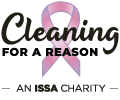Coronavirus Ask the Experts
By Jeff Jones
- By: Jeff Jones
- , Adon Rigg
- , Alison Palmer
- | March 20, 2020
SARS-CoV-2 is an example of an enveloped virus, which is actually easier to inactivate outside of the human body than non-enveloped viruses like noroviruses. By following the proper procedures, we can get through this crisis
Disinfecting is a part of the decontamination process, so decontamination cannot take place without proper professional disinfection. For added assurance, pre-disinfect, then clean and then post-disinfect. Pre-disinfection is common practice in situations where there is potentially a high bio-load, including cases of COVID-19.
Use a hospital grade disinfectant registered with the Environmental Protection Agency (EPA) that is proven to inactivate enveloped and non-enveloped viruses. Under EPA’s emerging pathogens policy, they have published the EPA list N comprised of approved disinfectants for use against SARS-CoV-2. Some products contain hydrogen peroxide, which is ideal as it neutralizes to H2O, leaving no chemical residue behind. Others may contain citric acid.
Always follow manufacturers’ instructions for the product so you understand the product’s compatibility with your surfaces, dwell time, etc. The disinfectants label will have use directions that you need to follow in applying the product to ensure it is effective. Of particular importance, most disinfectant products require cleaning of the surface prior to disinfecting, and also require the disinfectant to remain wet on the surface for a specific period of time. Be sure to follow these instructions to ensure the efficacy of the disinfectant’s application. Test the product in an inconspicuous area of your surface, especially if you are dealing with things like textiles to reduce the risk of color loss or surface damage. Also be sure to use the product at the proper dilution.
Unfortunately, this pandemic has resulted in many unethical businesses trying to prey upon people’s fears. It’s important for everyone to ask the following of any service provider they are considering for decontamination:
- Is your business certified for this process?
- Which organization certified your business?
- How much experience do you have in this area?
- What products will you be using to disinfect and decontaminate?
- How will you use these products?
- What is the cost?
It’s also important to be wary of organizations that use the term “deep clean,” as there is not a standardized definition of what deep cleaning is. If your facility is not contaminated, you can disinfect it yourself. If it becomes contaminated, contact a certified professional for help.
Many companies are currently charging $1.60-$2.00 per square foot for decontamination. However, any ethical firm will be flexible with customers, as a 400,000-square foot facility would not have budget for a $2 per square foot quote
Homeowners can place protective gloves used during cleaning into a plastic bag that is thrown in a trash bin. Professionals, however, must follow regulations that often vary from municipality to municipality. They must carefully package biohazard materials and work with a medical waste company to remove and dispose of them properly.
GBAC has anticipated a Bio-Forensic Tier 4 situation – introduction of a known infectious agent – for years. We have worked on protocols and procedures based in science to prepare. In February, GBAC conducted extensive hands-on training with forensic operators and certified bioforensic restoration specialists with a special focus on the inactivation of coronavirus.

Jeff Jones, a Certified Bio-Forensic Restoration Specialist®, Certified Forensic Operator® and Director of Forensic Operations for the Global BioRisk Advisory Council (GBAC), offers insight around the virus based on his more than 50 years in the industry
Other Experts





News and Updates
Kimberly-Clark Drafted by NBA Team
Kimberly-Clark Professional has entered into a multi-year, sustainability-focused partnership with the NBA’s Atlanta Hawks and the team’s home stadium, State Farm Arena.
P&G VP Named Board Chair of Regional United Way Chapter
Brian Hodgett has been named chair of the board of directors for the United Way of Greater Cincinnati (UWGC). Hodgett currently serves
Upcoming Events
Imperial Dade Announces 2024 Innovations Expo
Imperial Dade will host its annual Innovations Expo on June 26, from 9 a.m. to 3:30 p.m. PT, at the Hilton Anaheim in
Registration Now Open for 2024 Business Growth Strategies Conference
Registration is now open for the 2024 Business Growth Strategies Conference. Hosted by ISSA, the worldwide cleaning industry association, this year’s conference





